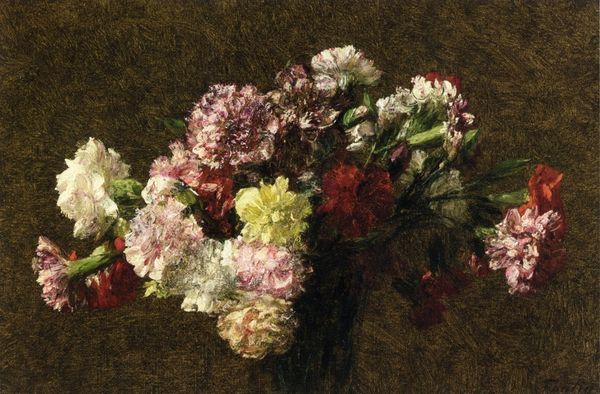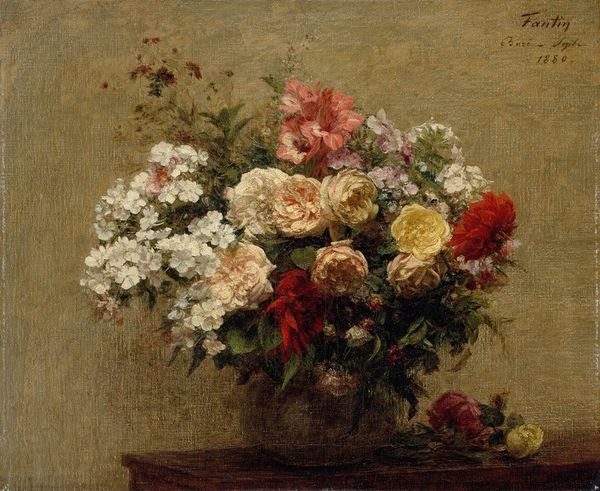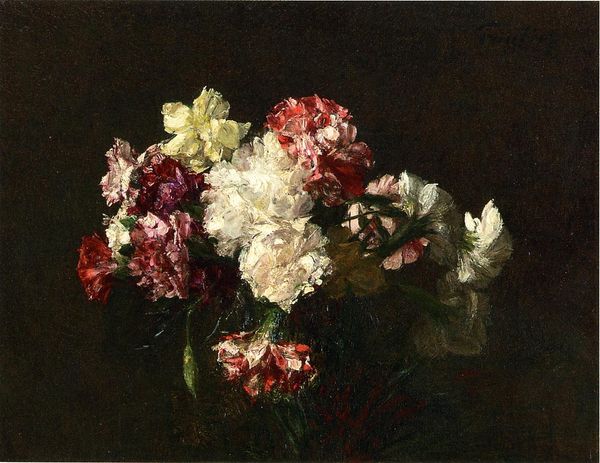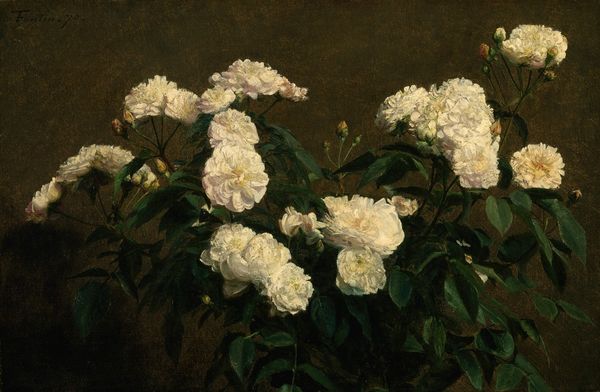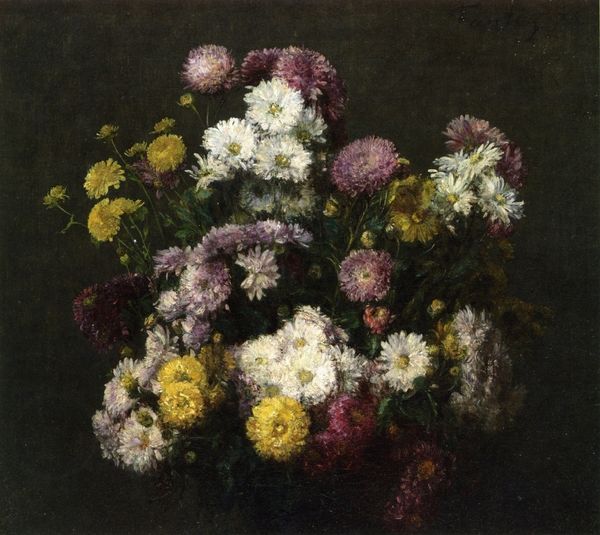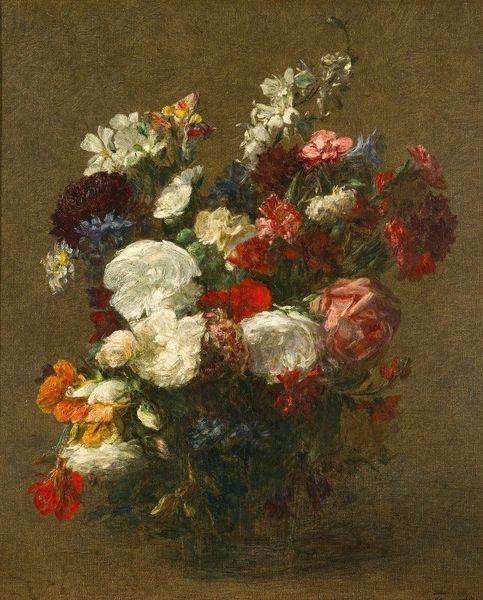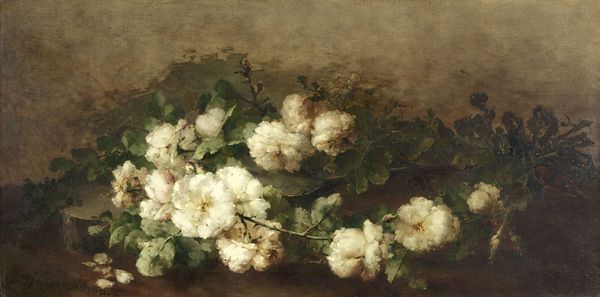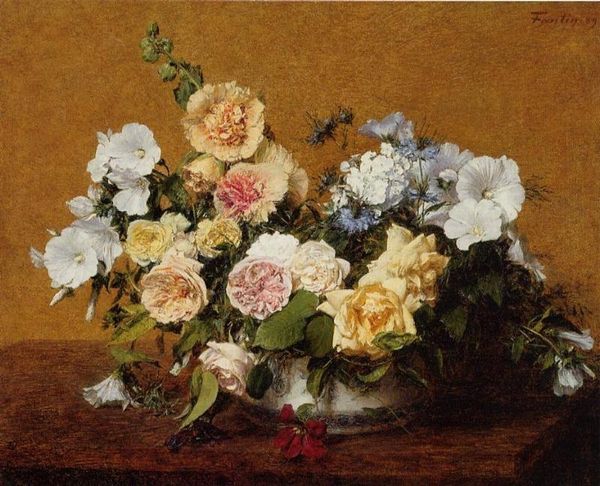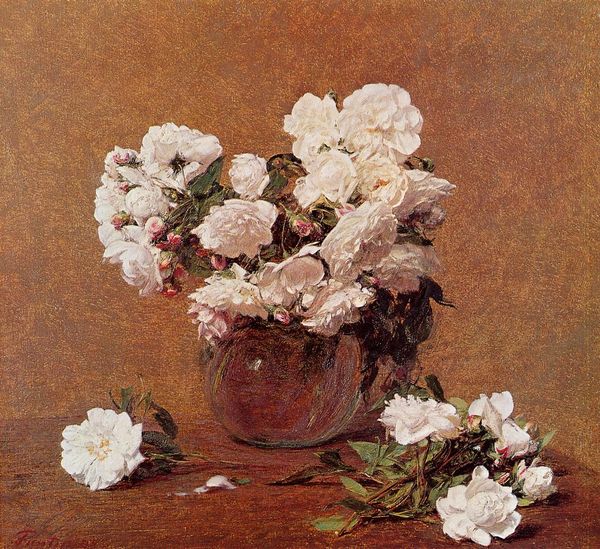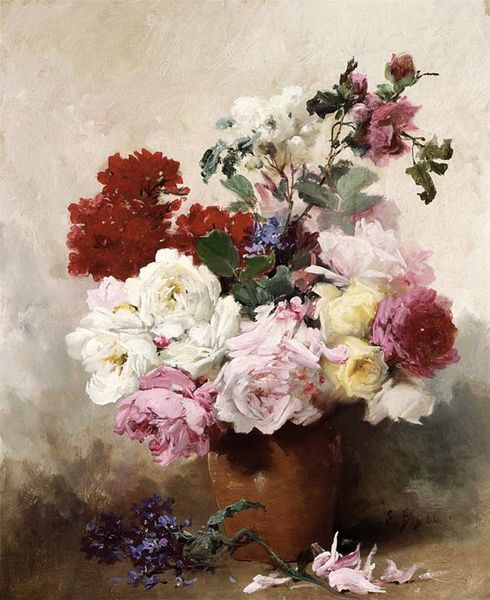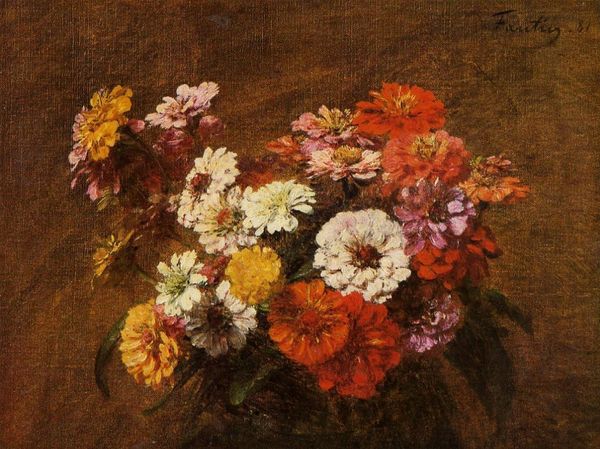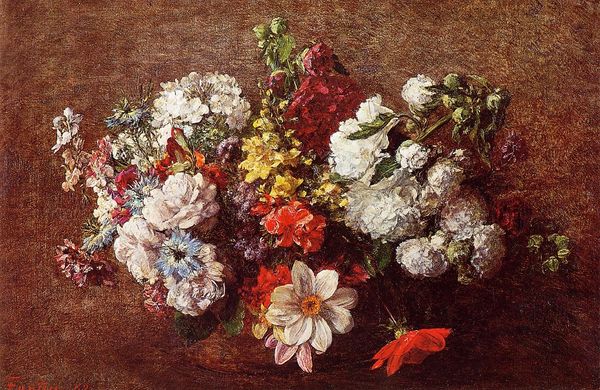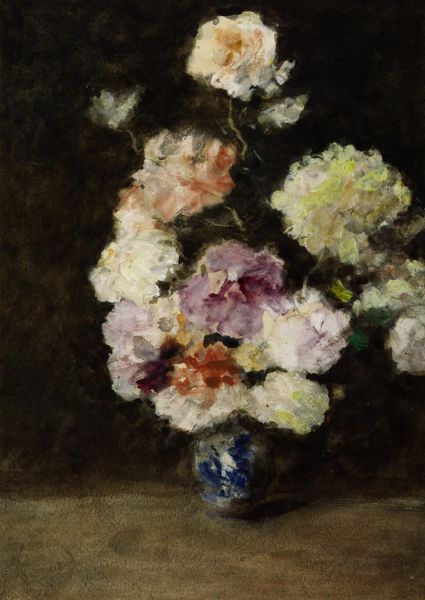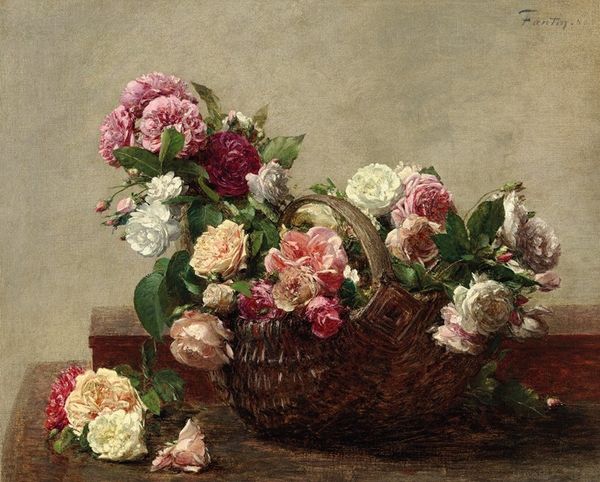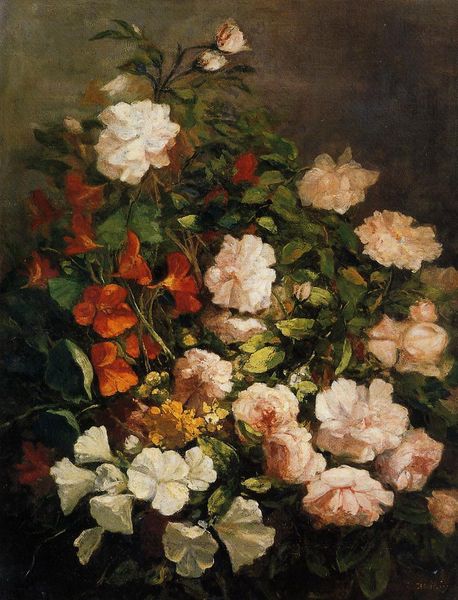
painting, oil-paint
#
painting
#
oil-paint
#
flower
#
oil painting
#
intimism
#
romanticism
#
realism
Copyright: Public domain
Curator: Alright, let’s talk about this lovely still life: “White Phlox, Summer Chrysanthemum and Larkspur,” attributed to Henri Fantin-Latour. We don’t have an exact date for its creation, but it’s representative of his mature style. Editor: You know, my first impression is… fluffy! It’s like a cloud of flowers landed right on the canvas. And all that white! It's ethereal, almost dreamlike. Makes me think of weddings. Curator: That sense of the ethereal speaks to Fantin-Latour’s connections to Romanticism, though he's generally considered a Realist. His still lifes, including this one, were quite commercially successful, helping to secure his financial independence at a time when many artists struggled. He was embraced by the Academy. Editor: Ah, that explains the fluffy bits! Makes it more like a formal garden arrangement now that you mention its appeal to formal tastes. The arrangement is dense; are those hints of a vase? A table? It’s all submerged under blossoms. Curator: You’re right; there’s just the slightest suggestion of support. What strikes me is the tension between the careful arrangement – these weren’t haphazardly placed – and the way he loosens his brushwork, especially around the edges. It anticipates later Impressionistic styles. Editor: It’s a very contained explosion of beauty, isn’t it? All this whiteness feels intentional, as though he wanted us to find nuance in what could easily be monotonous. I think he succeeds because those touches of pink and lavender give depth. Curator: Absolutely, the delicate use of color keeps the painting from becoming sterile. Fantin-Latour’s flower paintings have often been interpreted as a reaction against the increasing industrialization of the 19th century, a retreat into natural beauty. It reflects a burgeoning culture of professional art critics. Editor: True, a lovely bouquet is hardly going to frighten the horses or inspire revolutionary fervor, is it? And I have a feeling that the public probably took them at face value: pure, unadulterated pleasure. Which, you know, is a valuable commodity. Curator: I think you’ve hit upon something important. In a world becoming increasingly turbulent, these paintings offered respite and accessible beauty to a burgeoning bourgeois audience eager to embrace domesticity. Editor: Well, now I look at the painting again, I realize those petals are whispering 'tranquility'. Works for me! I am going to search the image when I get home. Curator: I agree entirely. Its value resides not just in aesthetic skill but in its appeal for order amid disorder, that it provided an antidote of serenity to the times, and an expression of changing cultural values.
Comments
No comments
Be the first to comment and join the conversation on the ultimate creative platform.
